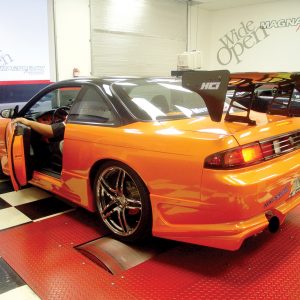Street Rods
When it comes to performance, the devil really is in the details. Ever wonder why one engine makes more power than another, when both are seemingly identical? The answer to this very common performance question lies in the attention to detail. Basic performance elements such as engine tuning, spark timing curves, and, yes, even oil selection all come into play when you attempt to extract the maximum amount of power from your existing combination.
Time and time again, our advice to those interested in learning about stout-running engines is that it’s the total combination that makes it all happen—considering, of course, that components are prepped, cleaned and assembled as if in a “clean room.”
Have you ever noticed how some people can take their car to the strip and look as if they’ve raced all their lives, while others look totally out of control in the bleach box and during staging? More often than not, the driver with the calm, cool and collected approach seems to regularly trigger the win light. The reason for this smoothness isn’t completely initiated by the driver; in most instances, it is the correlation between man and machine.
We first wrote about this 565-cubic-inch Dart “Big M” engine, equipped with Dart Big Chief II Pro Stock-type aluminum heads, back in our October ’04 issue. The engine builder was Quarter Mile Performance in Chatsworth, California, and at the time, we called it “possibly the world’s most powerful four-barrel big-block.” It produced 1037 horsepower at 7200 rpm and 806 lb-ft of torque at 5500 rpm–plenty stout by anyone’s standards.
The small-block Chevy has enjoyed a long, happy life. Sure, the current LS1/LS6 version is quite far removed from the original, but thousands upon thousands of little mouse motors continue to provide the sole means of motivation to everything from stationary irrigation pumps to Le Mans-winning C5R Corvettes. Naturally, this list also includes all manner of boulevard bruisers, street stompers and resto rockets. Heck, we’ve even seen little Chevys under the hood of “Brand X” machinery. The continued popularity of the small-block Chevy is not surprising. Take a look at the combination of power potential and parts availability and multiply that by the cost quotient, and you have the makings of a real success story. Add to this equation the millions of project motors just sitting around junkyards throughout the world, and it is easy to see why enthusiasts continue to embrace the mighty mouse motor as the performance powerplant of choice.
The automotive world became a different place when Chevrolet introduced the new ’55. Prior to that time there were many Chevy buyers, but after the ’55s were released there were newborn Chevy enthusiasts. The new Chevys were not only great-looking, but they were also powered with what would become one the finest V-8 engines available anywhere. There was an instant attraction to the ’55, and the interest continued to grow once the ’56 and ’57 were introduced. Fortunately, all three model years became extremely popular, so Chevy enthusiasts took care of them, and many nice examples remain today.
When the engineers at Chevrolet designed the fuel inlet and fuel cap for the early Nova, they must not have looked at the rest of the car. Novas aren’t called shoeboxes for no reason; with the exception of the wheels–and that gas cap–they are basically square. Wheels have to be round, but the gas cap, well….
Replacing interior components is not usually that difficult, but interior repair–especially seat repair–requires skills, equipment and training which many enthusiasts may not have acquired. To find out what it takes to make a replacement seat, we went to the Performance Choice division of Mid America Motorworks in Effingham, Illinois.







